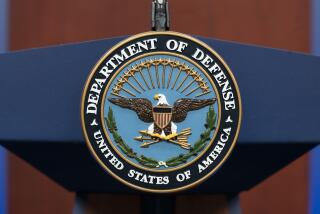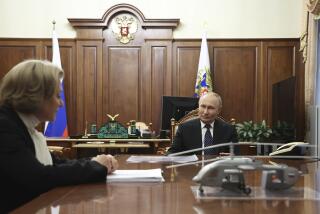More troops may be sought in Afghan war
- Share via
WASHINGTON — A day after President Obama ordered additional soldiers and Marines to Afghanistan, the top U.S. commander there said Wednesday that he may need still more troops in coming months to bolster an intensified war effort that could last as long as five more years.
Army Gen. David D. McKiernan plans to use the 17,000 soldiers and Marines Obama authorized to try to break an impasse in fighting with the Taliban in the southern part of the country.
“What this allows us to do is change the dynamics of the security situation, predominantly in southern Afghanistan, where we are at best stalemated,” McKiernan said at the Pentagon.
The new deployments, which will raise the U.S. troop level to about 55,000, will fulfill military needs through Afghanistan’s Aug. 20 presidential election, McKiernan said. But he held open the possibility of additional troop requests.
McKiernan said that last year he had forecast the need for an additional 30,000 troops for 2009 and beyond. The 17,000 ordered Tuesday, combined with the earlier assignment of an Army brigade of about 3,500 from the 10th Mountain Division, provides two-thirds of the need, he said.
The other 10,000 or so troops could be sought this year or next if military reviews indicated the need for them, McKiernan said.
The next requests are likely to include a training brigade, needed to help double the size of the Afghan security forces to 135,000, and another combat unit from the Army or Marines.
Defense Secretary Robert M. Gates said Wednesday that the administration would not consider further troop requests until a strategy review is completed in April. Gates, who is traveling to a NATO meeting in Poland, also said he planned to press allies this week to follow the U.S. example and do more in Afghanistan.
“It is a new administration, and the administration is prepared to make additional commitments to Afghanistan,” Gates said. “But there will clearly be expectations the allies must do more as well.”
McKiernan acknowledged that there is a limit to how many foreign forces the Afghan people would tolerate in their country. But he said the troops could help stabilize the country while local and international officials work on governance, economic development and security force increases.
“I would like to reinforce what the president has said, that this is not going to be won by military forces alone,” he said. “And while this will give us a security foundation, we certainly need additional contributions . . . that will enable people in Afghanistan to feel hope and to develop their abilities.”
He also cautioned that the additional forces did not represent a troop “surge,” as occurred two years ago in Iraq, but an intensified war effort that may last for years to come.
“This is not a temporary force uplift. It’s going to need to be sustained for some period of time,” he said, defining the period as “the next three to four or five years.”
He described the insurgency as resilient and said the U.S. and its allies did not have enough forces in the southern part of the country, the stronghold of the Taliban.
McKiernan said U.S. commanders also remained troubled by extremists in sanctuaries along the Afghan-Pakistani border and expressed concern about this week’s cease-fire between the government in Islamabad and militants in Pakistan’s Swat Valley, about 100 miles from the capital.
“We’re going to watch this very carefully and see how that does affect the insurgency on the Afghan side of the border,” McKiernan said.
--
More to Read
Sign up for Essential California
The most important California stories and recommendations in your inbox every morning.
You may occasionally receive promotional content from the Los Angeles Times.










